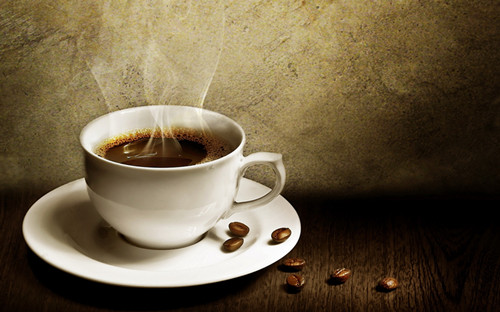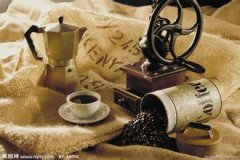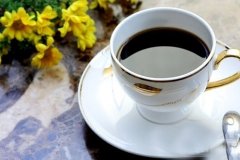Coffee Common Sense About Coffee Latte Art
Latte Art is a method of making lattes with designs on the surface of espresso by pouring foamed milk into espresso. The art of flower drawing can also be to draw a simple beautification pattern directly on the surface of the foam. The art of drawing flowers is particularly difficult to make all the time, because there are certain requirements for espresso cups and milk. And the quality of the flower is also determined by the rich experience of the barista and the quality of the espresso machine. Finally, pouring out beautiful flowers is definitely a challenge for baristas to make lattes.

The History of Coffee lace
The art of flower drawing has different development in different countries. According to the espresso and fine milk bubbles and the steps of making them, combined with coffee fat and milk bubbles to make patterns, perhaps the real birthplace of flower drawing art is in Italy.
From 1980 to 1990, the art of flower drawing developed in Seattle, USA. In particular, David Shaumel popularized the art of coffee flower drawing. In 1986, Shaumel affirmed the development of microbubbles ("velvet foam" or "milk texture") to Jack Kelly, who works at the Uptown espresso Cafe, and since then the heart-shaped pattern has become a signature product at the "Espresso Vivace" Cafe in 1989. Shaumel created the rose flower pattern in 1992 after seeing a photo of Cafe Mateki, an Italian cafe. Shaumel then popularized the art of latte drawing in his training class. Meanwhile, Italy's Luigi Lupi got in touch with Shaumel online and shared videos of each other making lattes and cappuccino decorations.
The ingredient of coffee flower
Latte pull is actually a mixture of two sticky liquids: espresso and milk microbubbles. Espresso is a sticky liquid coffee with coffee fat (a layer of foam floating on espresso); milk microbubbles refer to beating milk into foam with a milk foam machine. The milk itself requires full-fat liquid milk, while coffee is thickly liquid. Neither coffee nor milk is in a steady state. Coffee fat is separated from espresso, while milk bubbles are obtained from liquid milk. Coffee fat and milk bubbles disappear in just a few minutes, so coffee flowers are kept for a short time.
The technology of coffee flower drawing
Coffee cups first need to make espresso and milk microbubbles with coffee fat, and then synthesize them into latte flowers.
Espresso must have enough fat on the surface before adding milk. When the white foam is poured into the reddish brown coffee, the sharp color contrast presents a creative pattern. After the milk is poured, the foam separates from the liquid and rises to the surface. If the amount of milk and espresso is "just right", the milk can moves left and right as it is dumped, and the foam rises and forms a pattern on the surface. Sometimes, a pattern can be drawn on the foam with a flower needle or stick, but not necessarily in the process of pouring.
There is a different view in the coffee community that baristas are too concerned about the styling of lattes. The view is that we pay too much attention to the external image of coffee rather than fancy coffee itself, such as taste and other factors. This is even more important for novice baristas.
The types of coffee flowers
At present, two kinds of flower drawing are widely used: "free dumping" (the pattern is formed when the milk foam is dumped) and "carving" (painting on the milk foam after the milk is poured with a coffee needle). Free dumping is more widely used in American cafes, which requires more preparation time when making coffee.
Dumping
The most common patterns of toppling flowers are heart-shaped, rose-shaped and fern leaf-shaped. The heart shape is easier to make and is often used to make macchiato, while the rose shape is more complex and is often used to make lattes. More complex patterns are also possible, some of which need to be dumped several times.
Carved flowers
Carved patterns can range from simple geometry to complex paintings, such as three-dimensional shapes with shadows: animals, flowers, etc., and some patterns need to be fixed with a coffee blender. The life of the carved coffee is shorter than that of the dumping technique, because the foam breaks down faster.
Important Notice :
前街咖啡 FrontStreet Coffee has moved to new addredd:
FrontStreet Coffee Address: 315,Donghua East Road,GuangZhou
Tel:020 38364473
- Prev

Basic knowledge of boutique coffee about American coffee
Some friends have questions about the practice of American coffee. Dilute a cup of Espresso with water. Is it American coffee? Uncle Dou's answer: it is indeed so. Let's first take a look at how American coffee appears and is named. American coffee was born after World War II, when the Americans ended the war in Europe, many troops came to southern Europe, they could not drink Espresso, so
- Next

The source and characteristics of the mocha pot
The source of mocha pot, also known as direct-fire Italian coffee pot or semantic mocha pot, is a kind of traditional Italian coffee utensils. Italian mocha pot (Moka Express) comes from the name, because it is related to mocha coffee (Mocha), originated in 1933 invented by Mr. Alfonso Bialetti in Italy, only because of this coffee utensil invented by Mr. Bialetti.
Related
- Beginners will see the "Coffee pull flower" guide!
- What is the difference between ice blog purified milk and ordinary milk coffee?
- Why is the Philippines the largest producer of crops in Liberia?
- For coffee extraction, should the fine powder be retained?
- How does extracted espresso fill pressed powder? How much strength does it take to press the powder?
- How to make jasmine cold extract coffee? Is the jasmine + latte good?
- Will this little toy really make the coffee taste better? How does Lily Drip affect coffee extraction?
- Will the action of slapping the filter cup also affect coffee extraction?
- What's the difference between powder-to-water ratio and powder-to-liquid ratio?
- What is the Ethiopian local species? What does it have to do with Heirloom native species?

